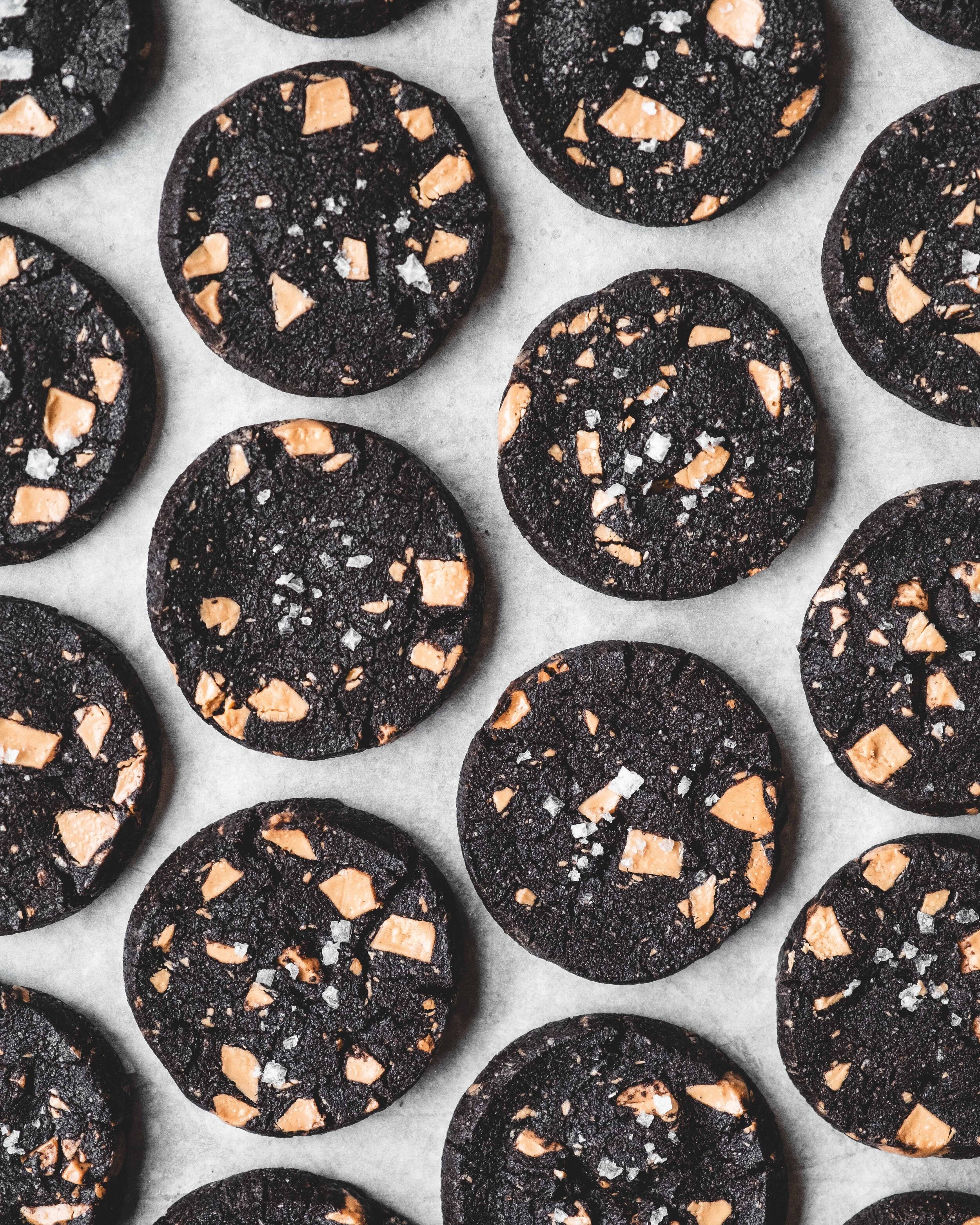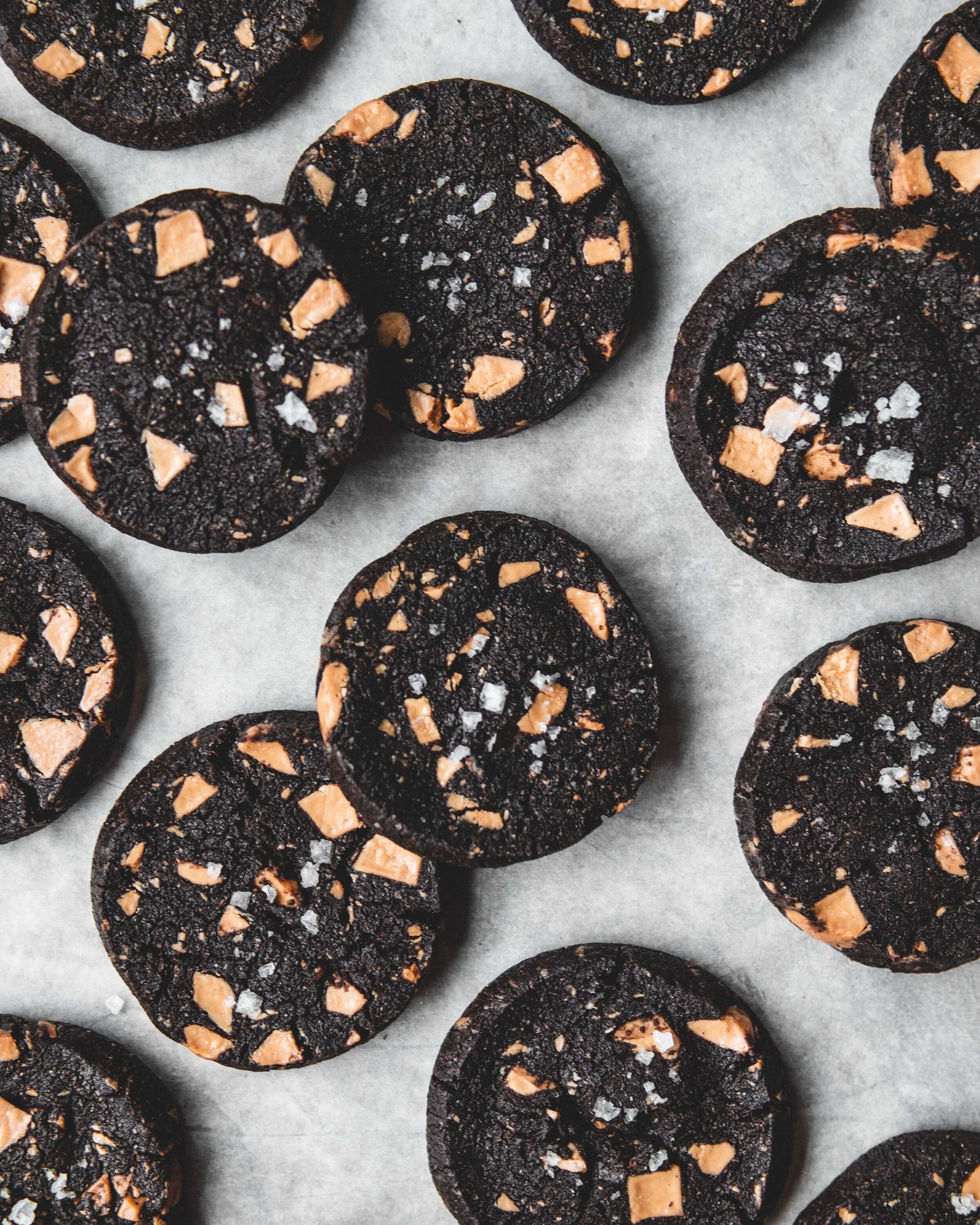Time for another #onetinbakes recipe? Why yes, I think it just might be. It is now officially less than a month until the book is released in the US and Canada, by which point it should also be back in stock in Australia and New Zealand. To get you all excited I wanted to share one of my favourites from the book, also one of the easiest, the raspberry cheesecake streusel bars. Now, the reason I love them is partly the simplicity and then of course the finished result,who could say no to a cheesecake bar. In the recipe the streusel does double duty, it forms the crust the cheesecake rests upon and it forms the streusel topping. Double streusel, double crunch. A very good thing if you ask me. The cheesecake filling itself is very simple, a sour cream spiked affair giving a wonderful tang that goes so well with the raspberries. The recipe is also endlessly adaptable, since the release of the book a month ago I’ve seen versions with cherries, apricots, tayberries, strawberries. Basically if you’ve got some fruit, you can probably make a version of these.
Before we get to the recipe I do need to make one confession and one correction. The recipes were developed and tested with a scale, it’s the method I find the most straightforward and it ensures accurate baking. To make the book more universal the ingredients were also listed in cups and ounces to make the book accessible to those who don’t use a scale (although I will encourage you to try, kitchen scales are very low cost and it means you don’t have to convert recipes that use grams plus most importantly it means less washing up). After the book was sent to some friends in the US an error in one element of one recipe was spotted. I have had the error corrected for future print runs but I wanted to make sure you have the correct recipe ahead of the books wide US release. The error is in the streusel recipe for these bars and it is the American measurements which are wrong. I have made the recipe many times and the gram measurements are all completely fine. Also after the error was spotted I went through the book looking for any other issues with the conversion to cups and I haven’t found any. Apologies for the error, it was done during the edit process and because I don’t work with that system of measurements on a daily basis I missed it. The recipe below is the updated corrected recipe for your enjoyment.
If you’re in the US and want to preorder a copy you can do so from the obvious places (Amazon, Barnes and Noble) but if you want to support small business the book is also available for preorder from Omnivore Books in SF, Now Serving in LA, Book Larder in Seattle and from most independent bookstores. In Canada its available again from Amazon, Indigo Books, Mcnally Robinson, Whilst my book tour is on hold for the time being, I will also be doing a virtual tour of sorts so make sure your following me on instagram should you like to hear about these events first.
Raspberry Cheesecake Streusel Squares
From One Tin Bakes by Edd Kimber (published 2020 by Kyle Books)
Makes 16-24
Lemon-infused cheesecake bars topped with jammy raspberries would be wonderful just on their own, but I wanted to make something a little more impressive, so these are topped with oat streusel, adding great texture. While that might seem like you’re having to make another element, you actually just make a bigger batch of the base, keeping back a small amount and crumbling it over the cheesecake. I like these with a big mug of tea, cutting them into small squares for a little sweet treat, but if you prefer, you can cut them into more regular brownie-sized pieces.
Streusel
225g (8oz / 2 sticks) unsalted butter, melted, plus extra for greasing
350g (12oz / 2 3/4 cups) plain (all-purpose) flour
200g (7oz / 1 cup) caster (superfine) sugar
1⁄4 teaspoon fine sea salt
4 tablespoons rolled oats
Cheesecake
565g (20 oz) full-fat cream cheese, at room temperature
120ml (4fl oz / 1⁄2 cup) sour cream, at room temperature
200g (7oz/1 cup) caster (superfine) sugar 2 tablespoons cornflour (cornstarch)
2 teaspoons vanilla bean paste
finely grated zest of 2 lemons
2 large eggs
For the Raspberry Filling
3 tablespoons raspberry jam
300g (10 1⁄2oz) fresh raspberries
Preheat the oven to 180°C (350°F), Gas Mark 4. Lightly grease a 9x13 brownie tin, then line with a strip of parchment paper that overhangs the two long sides of the tin. Secure the paper in place with two metal clips.
For the streusel, mix together the flour, sugar and salt in a large bowl. Gradually drizzle in the melted butter, stirring with a fork to combine until the mixture has formed clumps, then tip about two-thirds of the mixture into the prepared tin and spread out evenly. Use a glass to compact it into a flat layer. Dock all over with a fork and then freeze for 10 minutes. Mix the remaining streusel with the oats and refrigerate until needed.
Bake the base for 20 minutes, or until just starting to brown, then remove and set aside.
To make the cheesecake, place all the ingredients into a large bowl and mix together until smooth and evenly combined. Pour the cheesecake mix evenly over the base.
For the filling, gently warm the jam in a pan until loose, then remove from the heat and mix with the raspberries, coating evenly. Dot the raspberry mixture over the cheesecake, then crumble the reserved streusel evenly over the top.
Bake for 35–40 minutes, or until the streusel is lightly browned.
Leave to cool in the tin for an hour, then refrigerate for at least 4 hours, before cutting into squares to serve.
Store in a sealed container in the refrigerator for 4 days.









